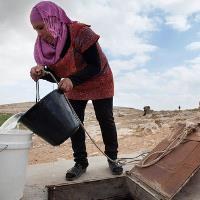(BRUSSELS) -A decline in development aid from the EU and its Member States is linked to an 80 per cent reduction in debt relief operations and a decrease in in-donor refugee costs, the EU Commission said Tuesday.
“Achieving sustainable development requires a persistent collective effort,” said Commissioner for International Cooperation and Development Neven Mimica: “We know we need to do more. As the world’s leading ODA provider the EU must show leadership and responsibility.”
The newly released figures by the OECD-DAC show that the EU and its Member States continue to be the world’s leading provider of Official Development Assistance (ODA) with an overall amount of 75.7 billion in 2017.
This amount represents 0.50% of EU Gross National Income (GNI). This is significantly above the 0.21% average of the non-EU members of the Development Assistance Committee (DAC), despite a small decrease compared to the previous year.
Global ODA, reported to the OECD-DAC by all donors, decreased from 131 billion in 2016 to 130 billion in 2017. EU collective ODA constituted 57% of global ODA in 2017.
The EU and its Members States have been consistently in the lead of global efforts on development financing. EU ODA reached its highest level ever in 2016.
The 2017 figures show a 2.4% decrease of EU collective ODA for 2017 compared to the previous year, corresponding to 1.9 billion. The EU ODA/GNI ratio for 2017 stood at 0.50%, down from 0.53% in 2016.
The decline of EU collective ODA in 2017 is linked to a reduction of 80% in the amounts of debt relief operations by EU Member States and a decrease of 8% in in-donor refugee costs. In-donor refugee costs declined from 11.2 billion in 2016 to 10.3 billion in 2017.
The decrease is also linked to the reflows of European Investment Bank’s (EIB) loans, which reduced the ODA reported by the EIB in 2017 by 28%. As the EIB’s portfolio progressively matures, reflows increase and their amounts are subtracted from ODA.
In 2017, four EU Member States provided 0.7% or more of their Gross National Income (GNI) in Official Development Assistance: Denmark, Luxembourg, Sweden and the United Kingdom. In 2017, in 5 EU Member States the ODA to GNI ratio increased, it decreased in 14 Member States and remained stable in 9. Considering ODA amounts, 12 Member States increased their ODA by 2.4 billion, while the decrease in 15 others amounted to 3.4 billion.
Factsheet: Publication of new figures on 2017 Official Development Assistance



